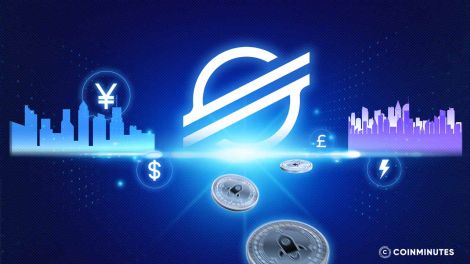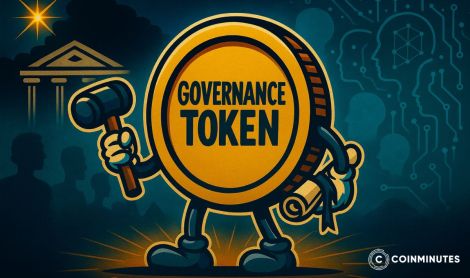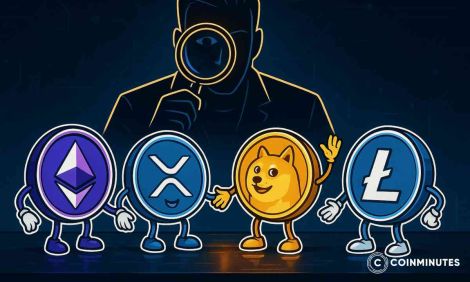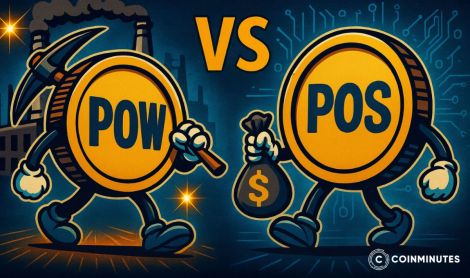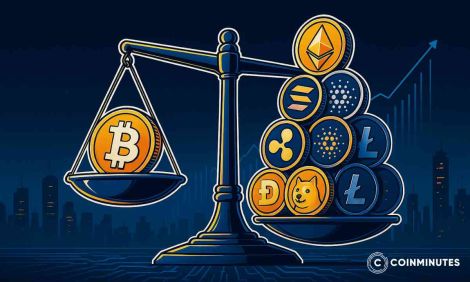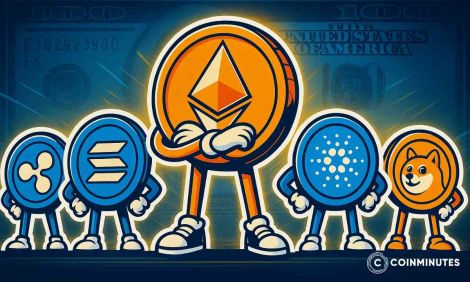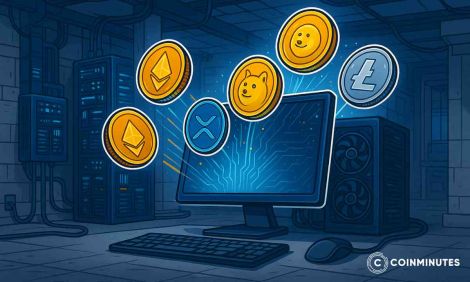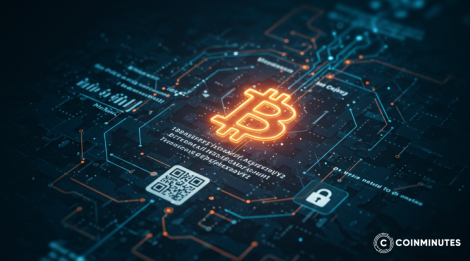Everything About Stablecoins: All You Need to Know About Crypto’s Safe Haven
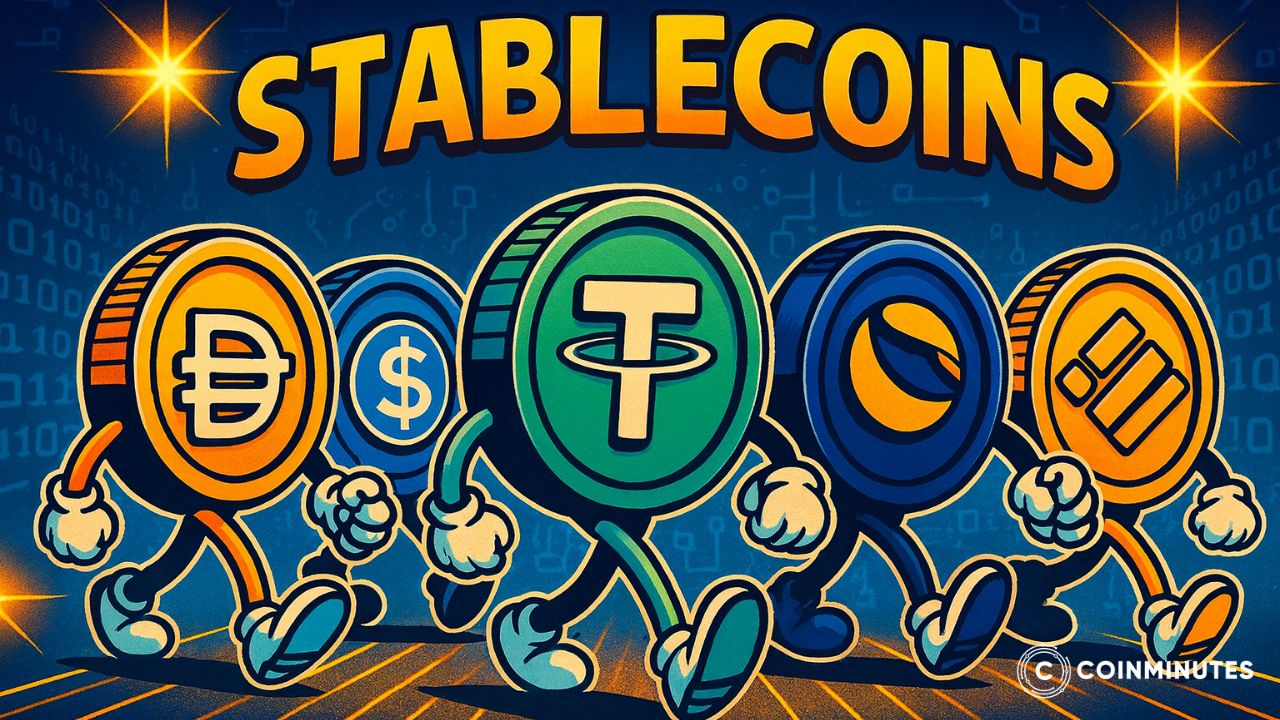
Let's be honest, the crypto market is a total rollercoaster. Prices go up, prices go down, and it's enough to give anyone whiplash. It’s exciting, for sure, but that wild volatility makes it pretty tough to use cryptocurrencies for, you know, normal money stuff.
So, how does anything actually get done in this chaotic world? How do people trade, lend, and borrow without the value of their money changing every five seconds?
The answer is one of the most important, yet kinda boring, inventions in all of crypto: stablecoins.
They're the calm in the crypto storm, the steady ground in a world of constant earthquakes. They are the essential plumbing that makes the entire modern crypto economy work. Here at CoinMinutes, we believe you can't really understand crypto today without understanding stablecoins. So, let's break down what they are, the different flavors they come in, and why they've become so incredibly important.
Stablecoins' Definition
A stablecoin is a cryptocurrency designed to have a stable price. It achieves this by pegging its market value to an external reference. Most of the time, that reference is a major fiat currency, like the U.S. dollar. The whole point is to create a token that is always worth, for example, exactly one dollar. So, 1 USDC should always equal $1.00. 1 USDT should always equal $1.00.
This makes them a bridge between the old world of traditional finance (TradFi) and the new, chaotic world of crypto. They offer the technological benefits of a cryptocurrency—the ability to be sent anywhere in the world, 24/7, quickly and cheaply, without needing a bank—but they strip away the gut-wrenching volatility that makes something like Bitcoin impractical for everyday payments.
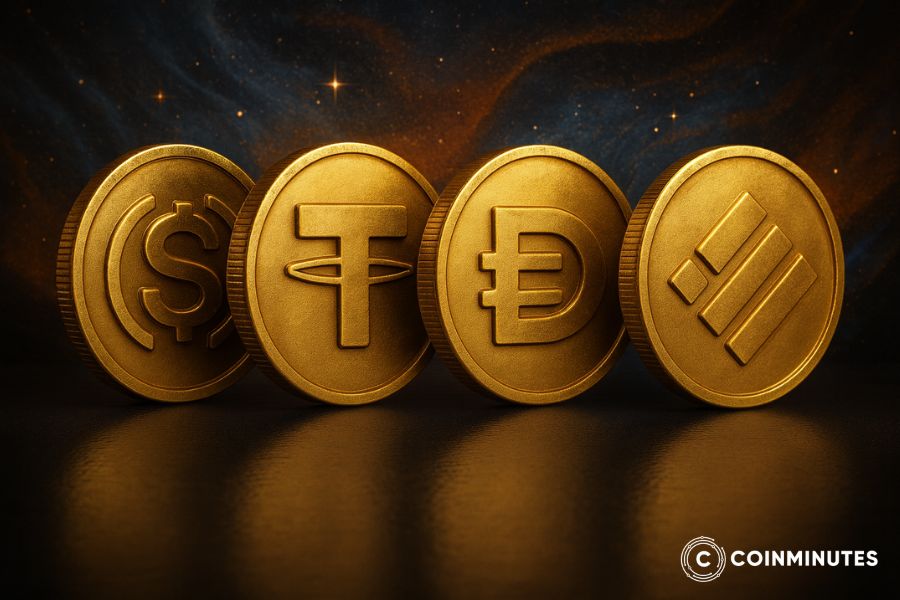
You can think of a stablecoin as a digital representation of a dollar, a euro, or some other asset, that lives on a blockchain. This stability makes them incredibly useful within the crypto ecosystem. Traders use them as a "safe haven" to park their funds during market downturns without having to cash out to a real bank account. They are the fundamental unit of account and medium of exchange in the world of Decentralized Finance (DeFi), used for everything from lending and borrowing to providing liquidity on exchanges.
The volume of stablecoin transactions has become a key metric for measuring activity in the digital asset economy, a figure that dashboards from companies like Visa are now tracking. But don't let the name fool you. Keeping that peg, maintaining that "stability," is a constant, difficult battle, and not all of them succeed.
How Do Stablecoins Work?
So how do these things stay "stable"? It's not magic. A stablecoin doesn't just hold its value because it says it will. It needs a mechanism, a set of rules and reserves that convinces the market that it’s actually worth its pegged value. If people lose faith in the mechanism, the peg breaks, and the whole thing can come crashing down.
The core principle is maintaining a reserve of assets that backs the value of the stablecoins in circulation. The nature of that reserve is what defines the different types of stablecoins. The issuer of the stablecoin must be able to handle redemptions—if you have 100 dollar-pegged stablecoins, you should be able to go to the issuer and redeem them for 100 real U.S. dollars. This promise of redeemability is what anchors the price.
Arbitrage traders also play a key role in maintaining the peg.
-
If the stablecoin price drops below $1 (e.g., to $0.99), arbitrageurs will buy up large amounts of the cheap stablecoin on the open market and redeem them with the issuer for $1, making a small profit on each coin. This buying pressure helps push the price back up to $1.
-
If the stablecoin price rises above $1 (e.g., to $1.01), arbitrageurs will go to the issuer, create new stablecoins for $1 each, and sell them on the open market for $1.01. This selling pressure helps push the price back down to $1.
This market mechanism works as long as everyone trusts that the backing is solid and that redemptions will be honored. The "how" of that backing is what separates the different types of stablecoins.
Main Types of Stablecoins
So, how do these things actually stay stable? It's not magic. They use different mechanisms to hold their peg, and understanding these differences is key to knowing which ones are safer than others. It's like a family with a few different personalities.
Fiat-Backed Stablecoins
This is the simplest and most popular model. For every stablecoin issued, a centralized company holds an equivalent amount of fiat currency—like U.S. dollars—in a bank account. Tether (USDT) and USD Coin (USDC) are the two giants in this space. They account for the vast majority of stablecoin trading volume.
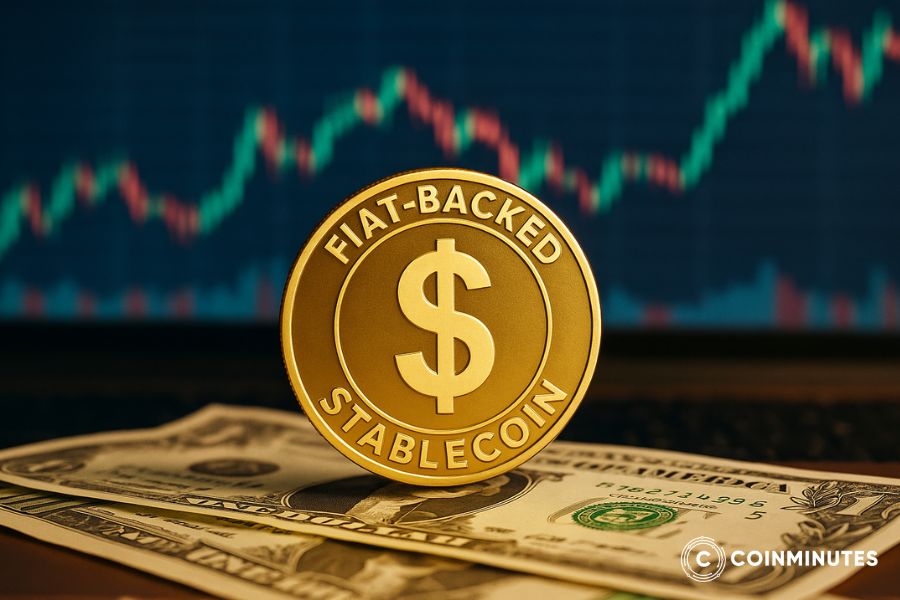
The system tries to maintain its peg by automatically increasing the supply when the price is above the peg and decreasing it when the price is below. This can involve a two-token system, where one is the stablecoin and the other is a token meant to absorb volatility.
This model requires you to trust the central issuer. You have to trust that they have the reserves they claim to have and will honor redemptions. To build this trust, reputable issuers undergo regular audits and publish "attestations" of their reserves.
Crypto-Backed Stablecoins
These stablecoins are backed not by dollars in a bank, but by other cryptocurrencies held in smart contracts. Dai (DAI) is the most prominent crypto-backed stablecoin. It is managed by a decentralized autonomous organization (DAO) called MakerDAO.
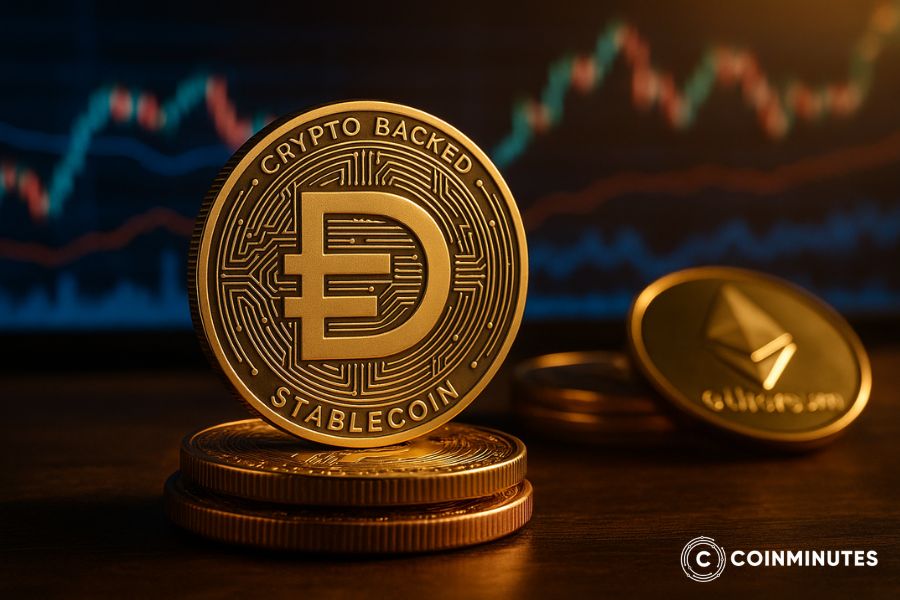
To create these stablecoins, a user must lock up another cryptocurrency (like Ether) as collateral. Because the collateral itself is volatile, these systems require over-collateralization. For example, you might have to lock up $150 worth of Ether to mint $100 worth of a stablecoin. This extra cushion is designed to absorb price drops in the collateral.
If the price of the underlying crypto collateral crashes too quickly, it can trigger a wave of liquidations that causes the stablecoin to lose its peg. It’s a more complex and fragile balancing act.
Algorithmic Stablecoins
This is the most ambitious—and most dangerous—category. Algorithmic stablecoins are not backed by any collateral at all. Instead, they use complex algorithms and smart contracts to manage the token's supply, automatically buying and selling the stablecoin on the open market to keep its price at $1. The most infamous example was TerraUSD (UST).
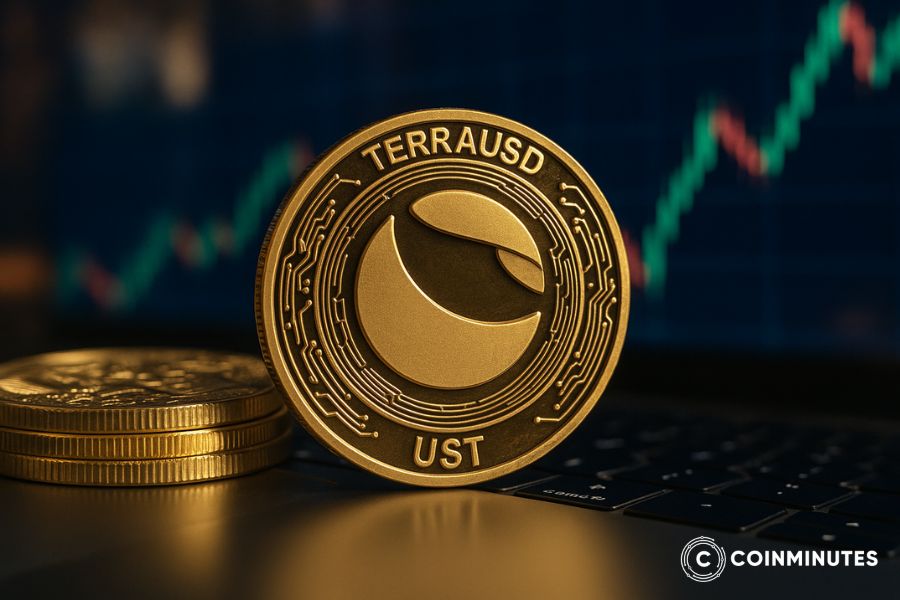
If the price is above $1, the algorithm mints more tokens to increase supply and drive the price down. If the price is below $1, the algorithm buys tokens off the market to reduce supply and drive the price up.
Algorithmic stablecoins are extremely fragile and depend entirely on market confidence. When that confidence is lost, they can enter a "death spiral." The collapse of UST in May 2022 wiped out over $40 billion in value and showed the world just how fast these systems can fail. Most observers now view this model with extreme skepticism.
Commodity-Backed Stablecoins
These are stablecoins backed by physical commodities, most commonly gold. Pax Gold (PAXG) is a token where each one is backed by one troy ounce of gold held in a London vault.

Similar to fiat-backed coins, an issuer holds a certain amount of a commodity, like gold bars in a vault, and issues a token that represents a claim on that commodity.
These stablecoins face the same as fiat-backed coins—counterparty risk. You are trusting the issuer to actually have the gold and to store it securely.
Hybrid and Emerging Models
The space is always experimenting. Some newer stablecoins, like FRAX, use a hybrid model. They are partially backed by real collateral and partially stabilized by an algorithm. The idea is to get some of the capital efficiency of an algorithmic coin while keeping the safety of a collateralized one. It's a complex but interesting new direction.
Why Are Stablecoins Important?
Stablecoins have become the essential, load-bearing infrastructure of the entire digital asset economy. Without them, most of what we call "DeFi" and "Web3" simply wouldn't work. Their importance can't be overstated.
Payments and Remittances
For everyday people, this is one of the most powerful use cases. If you want to send $500 to a family member in another country, a traditional bank wire can take 3-5 business days and cost you a hefty fee. With a stablecoin like USDC, you can send that same $500 across the globe in about 3 minutes for a fee of less than a dollar. For the millions of people who rely on remittances, this is a huge deal. This isn't just a theory; data from firms like Chainalysis has consistently shown that stablecoins make up a massive percentage of all on-chain transaction volume, much of it related to cross-border value transfer.
DeFi, Lending, and Yield Farming
This is the main playground for stablecoins. They are the poker chips of the DeFi casino.
-
Trading: Almost all trading on decentralized exchanges is done against a stablecoin pair.
-
Lending & Borrowing: Stablecoins are the most popular assets to lend out to earn a stable interest rate (or "yield"). You can deposit your USDC into a protocol like Aave and start earning a return on it, just like a high-yield savings account but with different risks.
-
Yield Farming: This is the more active strategy of constantly moving your stablecoins between different DeFi apps to find the highest possible interest rate. The entire multi-billion dollar yield farming world runs on stablecoins.
Trading, Hedging, and Risk Management
For active traders, stablecoins are an absolutely essential tool. The crypto market trades 24/7, and it's famous for its gut-wrenching volatility. If you're a trader and you think the market is about to take a nosedive, you can't just call your broker. Instead, you can sell your Bitcoin or Ethereum for a stablecoin like USDC. This lets you move your portfolio into "cash" on the sidelines, protecting your capital from the crash, without ever having to leave the crypto ecosystem. When you think the bottom is in, you can then instantly trade your stablecoins back into the assets you want. It’s a safe harbor in the middle of a stormy sea.
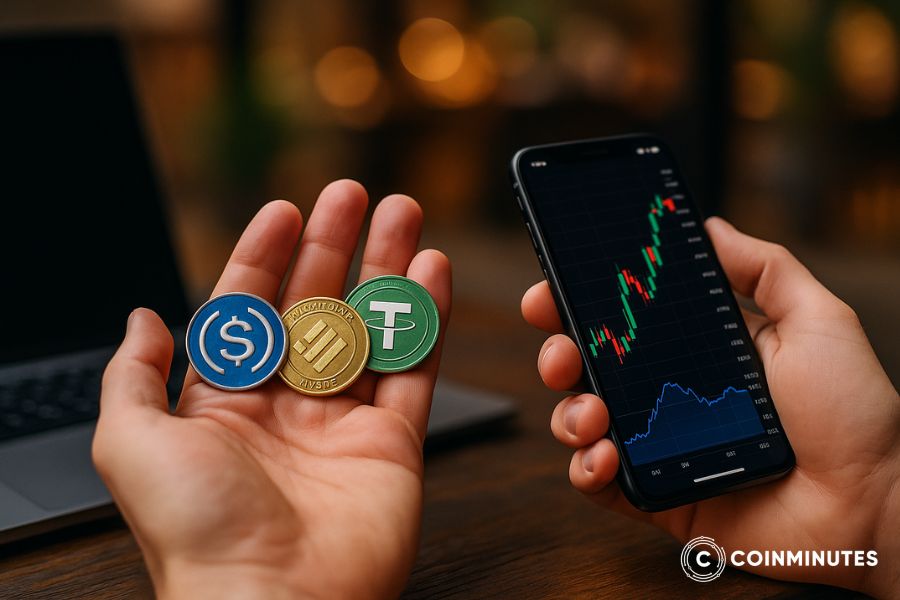
On/Off Ramps and Cross-Border Transfers
Stablecoins are the main bridge between the old financial world (we call it TradFi) and the new crypto world. They are the primary "on-ramp" for getting your dollars from your bank account onto the blockchain, and the primary "off-ramp" for turning your crypto gains back into dollars you can spend. Huge financial players are taking notice. Visa's own on-chain analytics dashboard shows that stablecoins are already settling a massive volume of transactions, rivaling some traditional payment networks. This shows they're not just a niche crypto tool anymore; they're becoming a serious piece of global financial infrastructure.
Benefits and Risks of Stablecoins
Like anything in finance, stablecoins come with a set of pros and cons. Understanding both is key to using them wisely.
Key Benefits: Stability, Liquidity, Accessibility
The benefits are pretty clear.
-
Stability: This is the big one. In a world where prices can swing 20% in an hour, having an asset that's designed to stay put at $1 is incredibly valuable.
-
Liquidity: The top stablecoins like USDC and USDT are everywhere. They are easy to buy, sell, and trade on almost every crypto exchange in the world, meaning you can always get in or out of a position.
-
Accessibility: They live on public blockchains. That means anyone, anywhere in the world with an internet connection can receive, hold, and send them without needing permission from a bank.
Major Risks: Depegging, Counterparty, Regulation
The risks are very real and you should never ignore them.
-
Depegging Risk: This is the nightmare scenario. A "depeg" is when a stablecoin loses its 1:1 value and starts trading for less than a dollar. We saw this in a spectacular fashion with the collapse of the UST algorithmic stablecoin. It can also happen temporarily to collateralized stablecoins during times of extreme market panic.
-
Counterparty Risk: This is the main risk for fiat-backed coins. You are trusting the company (the "counterparty") that issues the coin to actually have the dollars they say they have. If that company goes bankrupt or is fraudulent, the stablecoin could become worthless.
-
Regulatory Risk: The government is still figuring out what the rules should be for stablecoins. A sudden, harsh crackdown by regulators in a country like the United States could have a huge and unpredictable impact on the market.
How to Manage and Mitigate Risks
You can't eliminate the risks, but you can be smart about them. The best advice we at CoinMinutes can give is to not put all your eggs in one basket. Instead of holding all your stable value in just USDT, for example, you could split it between a few different reputable ones, like USDC and DAI. You should also favor stablecoins that are transparent, regulated, and provide regular proof of their reserves.
How to Evaluate a Stablecoin Before Investing
Not all stablecoins are created equal. Far from it. Before you decide to hold a significant amount of your money in one, you should run it through a quick "trust checklist."
Transparency of Reserves and Audits
This is the most important one for any collateralized stablecoin. Does the company actually prove they have the money? A trustworthy stablecoin issuer should provide regular, public reports from a real, independent accounting firm that verifies the reserves. For example, Circle, the company behind USDC, has historically provided monthly attestation reports from major accounting firms. This transparency is a huge sign of a quality project.
Regulatory Compliance and Legal Standing
Is the company that issues the coin playing by the rules? A stablecoin issuer that is a licensed and regulated financial company, especially in a major jurisdiction like the United States, is generally a much safer bet. This means they are subject to government oversight, which gives you a higher degree of confidence that they aren't doing anything shady with the reserves.
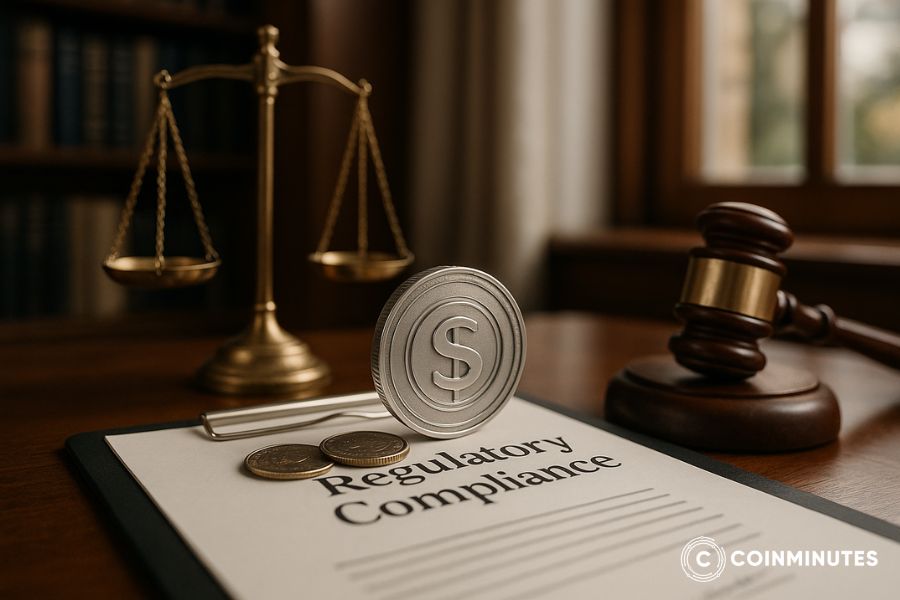
Market Cap, Liquidity, and Adoption
Size and popularity matter in the stablecoin world. A stablecoin with a high market capitalization (meaning there are a lot of them in circulation) and deep liquidity (meaning you can trade large amounts without the price moving) is a sign that it is widely trusted and integrated into the crypto economy. A stablecoin that is used by many different DeFi apps and exchanges is more likely to be reliable.
Community Trust and Project Team
Finally, what's the reputation of the people behind the project? Do they have a long, public track record in finance and technology? Or did they just appear out of nowhere with a flashy website? The trust of the community, built over years of reliable operation, is one of the most valuable assets a stablecoin can have.
List of Stablecoins Worth Investing in 2025
This isn't investment advice, but rather a who's who of the most important stablecoins in the market today.
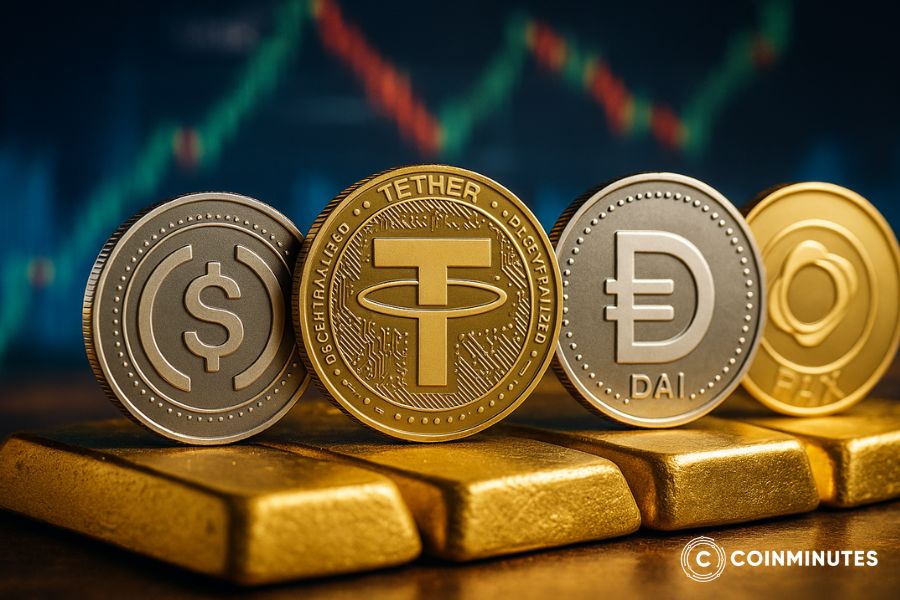
USDT (Tether)
USDT is the OG king. It's the oldest, largest, and most widely used stablecoin in the world, especially on international trading exchanges. It's the most liquid stablecoin by far. However, it has had a long and controversial history regarding the transparency of its reserves, which has made some people cautious.
USDC (USD Coin)
USDC is the teacher's pet. It's the second-largest stablecoin and its entire brand is built on being regulated and transparent. It's issued by Circle, a U.S.-based company, and is known for its clean monthly audits. For many, it's considered the safest and most reliable fiat-backed stablecoin.
DAI
DAI is the rebel. It's the leading decentralized stablecoin. It's not backed by dollars in a bank account but by a surplus of other crypto assets locked in a transparent smart contract run by the MakerDAO community. Its main advantage is that it's not controlled by a single company.
FRAX, TUSD, sUSD, GUSD, PAXG, XAUT
This is the extended family. FRAX is a cool hybrid coin that's partially backed by collateral and partially by an algorithm. TUSD (TrueUSD) and GUSD (Gemini Dollar) are other regulated, fiat-backed options. And then you have the gold bugs: PAXG (Pax Gold) and XAUT (Tether Gold) are tokens that are each backed by one ounce of real, physical gold sitting in a vault.
Up-and-Coming Stablecoins to Watch
The space is always evolving. People are working on new ideas, like stablecoins that are pegged to a basket of currencies instead of just one, or stablecoins that automatically earn you a yield just by holding them.
The Future of Stablecoins: Trends, Innovations & Regulatory Outlook
The future for stablecoins is going to be shaped by one massive force: regulation. There's no doubt that governments around the world are in the process of writing the rulebook for stablecoins right now. This will likely mean stricter requirements for reserve transparency and operations. This could be a good thing, as it might make the space safer and bring in more big, institutional players.
At the same time, we're seeing a lot of talk about Central Bank Digital Currencies (CBDCs). These would be official, government-run digital versions of currencies like the dollar. They could be a major competitor to private stablecoins one day, but that future is still a long way off.
Finally, the technology itself is still improving. People are constantly experimenting with new ways to create stablecoins that are more decentralized, more capital-efficient, and more resistant to censorship.
Continue Your Crypto Journey with CoinMinutes
Stablecoins are a cornerstone of the modern cryptocurrency market. They provide the stability necessary for the DeFi ecosystem to function and offer a vital bridge to the traditional financial world. Understanding their mechanics and risks is a fundamental part of crypto education. The team at CoinMinutes knows that this landscape is dynamic and subject to rapid technological and regulatory changes.
At CoinMinutes, we provide the latest analysis and educational content to help you stay informed about this critical sector. We encourage you to continue your learning journey to better navigate the opportunities and challenges of the digital asset economy. We are committed to giving you the clear, unbiased information you need to stay safe and smart in the world of crypto.
Frequently asked questions
It's a simple difference: who issues it.
-
A stablecoin (like USDC) is issued by a private company (like Circle).
-
A CBDC (Central Bank Digital Currency) would be a digital dollar issued directly by the government (like the U.S. Federal Reserve).
Think of it as the difference between a Starbucks gift card (issued by a private company for use in its ecosystem) and an actual dollar bill (issued by the government for use everywhere).
Not in the way you'd think of Bitcoin or a stock as an investment. Stablecoins are not designed to go up in value; they're designed to stay at $1. So, you won't get rich by buying USDC and hoping it goes to $2.
However, people "invest" with them by lending them out on DeFi platforms like Aave or Compound to earn interest, which is often called "yield farming." In that sense, they can be a tool to generate a return, but the token itself isn't the growth asset.
Yes, absolutely. It's called a "depeg," and it's the biggest risk associated with stablecoins. A depeg can be temporary, caused by a sudden panic or a glitch in the market, where the price might dip to $0.98 for a few hours before recovering. We saw this happen briefly to USDC in 2023 during a banking crisis. A depeg can also be permanent and catastrophic, which is what happened to the algorithmic stablecoin Terra/UST in 2022. Its mechanism failed, and it went from $1 to nearly zero, wiping out billions of dollars. This is why it's so important to understand how a stablecoin is backed.
 English
English
 Vietnamese
Vietnamese


